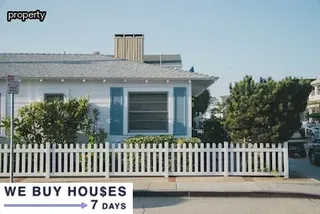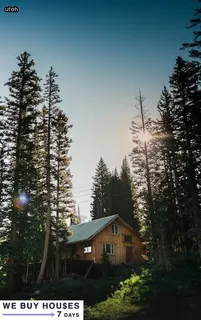When it comes to setting the rental price of a property, landlords in Utah should take into consideration various factors such as market rent, the condition of the property and any applicable tenant damage. Before listing a rental on the market, it's important to do your research and find out what other similar rentals are going for in the area.
It's also important to inspect the property inside and out and make any necessary repairs or renovations before determining a rental rate. In addition, be sure to factor in any damage that has been done by prior tenants so that it can be accounted for in the rental cost.
Ultimately, the best way to determine an appropriate rental price is to look at comparable properties in the area and use that data as a reference point when setting your own rate.

It is important for landlords to consider additional accessibility accommodations when it comes to rights and responsibilities of tenants. For example, landlords should provide reasonable modifications and accommodations in order to make a dwelling more accessible for tenants with disabilities.
This may include widening doorways, installing ramps, or providing handrails. Additionally, landlords must allow tenants to make changes that are necessary to accommodate a disability if the tenant pays for the cost of the alterations.
Landlords must also provide reasonable access to common areas, parking spaces, and other facilities on their property. Lastly, landlords should be aware that they may not refuse an individual with a disability tenancy based on their needs as long as any proposed modifications or requests made by the tenant are reasonable.
In Utah, landlords must disclose certain information to tenants before signing a rental agreement. Landlords must inform tenants of the lead paint disclosure requirements, any utility costs that are not included in the rent, and how security deposits will be handled.
Additionally, landlords are required to provide tenants with an itemized list of any damages done to the property at the time of move-in and move-out. The tenant is responsible for returning the property to its original condition minus normal wear and tear unless otherwise specified in a written lease agreement.
Landlords may only charge for damages that exceed normal wear and tear when a tenant moves out. A landlord should always inspect a unit before and after a tenant moves in or out to ensure that all damage charges are accurately assessed.
Finally, it’s important to keep accurate records of all repair costs as well as any agreements regarding damage deductions from security deposits.

In Utah, tenants have certain rights that must be respected by the property owner. The Utah State Landlord-Tenant Act provides specific rules and regulations for landlords and tenants to abide by.
Tenants have the right to a safe, clean and livable rental unit, which includes running water, electricity and heat. They also have the right to quiet enjoyment of their rental unit without interference from the landlord or other tenants.
The landlord is responsible for maintaining the rental property in a good state of repair. Tenants must keep their rental units in a clean condition, pay rent on time and not damage the property or disturb neighbors.
If a tenant does cause damage to a rental unit, they are responsible for repairing it or compensating the landlord for any costs incurred due to negligence. Tenants can also withhold rent if there are severe habitability problems that go unaddressed by the landlord.
Finally, tenants should know that they may be sued if they fail to pay rent or do not follow through with other contractual obligations set forth by their lease agreement. Property owners should ensure that all tenants are aware of their rights and responsibilities under Utah law in order to avoid any legal disputes in the future.
In the state of Utah, it is important for property owners to understand their rights and responsibilities when it comes to landlord-tenant law. Utah tenant damage laws protect a landlord's right to collect rent, receive reimbursement for property damage, and evict tenants in certain cases.
A property owner must also follow various safety regulations as well as provide tenants with a habitable living space. Additionally, landlords are responsible for disclosing any lead-based paint hazards or bed bug infestations on the premises and may not discriminate against potential tenants based on protected characteristics such as race or religion.
Understanding these rights and responsibilities is essential for successful landlord-tenant relationships in Utah.

Utah offers a tenant-landlord law system that covers a variety of topics, from damage caused by tenants to the rights and responsibilities of both parties. Property owners should be aware of their rights and obligations under the Utah code so that they can protect themselves in case of damage caused by tenants.
Some of the important points to pay attention to include security deposits, rental agreements, late rent payments, evictions, repairs, and termination notices. Security deposits are a common issue between landlords and tenants; they are governed by specific regulations that must be followed by both parties.
Rental agreements also play an important role in protecting both landlords and tenants by providing written documentation regarding all relevant terms and conditions. Late rent payments can result in serious consequences for a tenant such as eviction; however, property owners must follow specific procedures set out in the Utah code before they take any action against the tenant.
Additionally, landlords are responsible for making sure that any necessary repairs are completed promptly and correctly – tenants may be entitled to compensation if this is not done in accordance with the law. Finally, notice requirements should be followed when it comes time for a tenant to terminate their lease agreement, as property owners need to receive sufficient warning so that they can find another suitable renter quickly.
Understanding these key points will ensure that property owners have a comprehensive understanding of their rights and obligations under Utah’s landlord-tenant laws.
Utah landlords and tenants have specific rights under the state’s landlord-tenant law. Property owners should be aware of the potential damages that can occur to their rental property and the legal repercussions of such damage.
Key takeaways from Utah’s landlord-tenant law include strict rules on security deposits, tenant responsibility for repairs, restrictions on entry of a rental unit by a landlord, and guidelines for dealing with abandoned property. Security deposits are limited to no more than one month’s rent, must be returned within 30 days after the tenant moves out, and cannot be used as payment for any damages that occurred during tenancy.
Tenants are responsible for repairs related to normal wear and tear but not for damage caused by negligence or intentional abuse. Landlords must provide notice before entering the dwelling except in cases of emergency.
Finally, if a renter abandons their unit without proper notice, landlords are legally required to secure the property and may collect any unpaid rents or damages from the security deposit.

Salt Lake property managers need to be aware of the rights and responsibilities both landlords and tenants have when it comes to tenant damage in Utah. Landlords are legally obligated to provide tenants with safe, habitable living conditions and may be held responsible for any damages caused by neglect or disrepair.
On the other hand, tenants are expected to pay for any intentional damage they cause to the property during their tenancy. Property managers should understand how these laws impact their business and take appropriate steps to protect their interests.
They should also ensure they are familiar with the lease agreement they have in place so that they can address tenant damage quickly and efficiently. In addition, property managers should be aware of how tenant damage is defined in Utah law, which may include everything from broken windows or doors to damaged furniture or appliances.
Finally, understanding what legal recourse is available if a tenant fails to pay for tenant-caused damages is essential for Salt Lake property managers.
Having a move-in checklist is an important part of documenting damage to rental property in Utah. It is also one of the most effective ways to ensure that all tenant-landlord rights are respected and adhered to.
Property owners should have a checklist that outlines the condition of the rental unit prior to the tenant's occupancy, and can be used as a reference when reviewing any damage at the end of their lease. When completing this checklist with the tenant, it is important to go through all elements of the property with them, such as floors, walls, fixtures and appliances.
Be sure to document any existing damage along with detailed descriptions and photographs if possible. Additionally, make sure all parties sign off on the move-in checklist as an agreement that these are indeed existing issues in the rental property before tenancy begins.
This will help protect both parties in case there is any dispute about damages at move out time. Furthermore, it is useful for landlords to provide tenants with a copy of this completed move-in checklist so they know what kind of condition was expected when they moved into the rental unit.
Taking these steps can help landlords protect their investment by having documented evidence if there is ever an issue regarding tenant damage or property condition during or after tenancy.

Property owners can improve their understanding of the Utah tenant damage laws by assessing a move-out checklist effectively. This is an important step for landlords to protect their rights, as well as those of their tenants.
In order to accurately assess any potential damage done, all parties should take into account the condition of the property prior to occupancy. It is also essential to document any pre-existing damages such as stains, holes and other issues that were present before move-in.
During the assessment it is important for landlords to keep in mind that normal wear and tear are not considered tenant damage under Utah law. Additionally, if property owners do find evidence of tenant damage they should work with their occupiers to come up with an equitable solution that both parties agree upon.
Finally, landlords should be aware of the time period in which a tenant must be notified about any charges associated with damages prior to making a claim against them. By following these guidelines and assessing move-out checklists carefully, property owners can ensure they are correctly handling tenant damage issues in accordance with Utah's landlord-tenant laws.
In Utah, a landlord has four years from the termination of the tenancy to file a lawsuit against their tenant for damages. The statute of limitations begins on the date the tenant vacates the property and returns possession of it to the landlord.
This gives landlords ample time to assess any damage done to their rentals and pursue legal action if necessary. Tenants in Utah should be aware that even if they move out prior to their lease expiration date, they are still responsible for any damages that may have been caused during their tenancy.
Landlords should also be aware of their rights and remedies under state law, which include filing a civil suit if they believe they have suffered losses due to tenant damage or other matters. Lastly, both parties should familiarize themselves with local laws when it comes to landlord-tenant rights so that they can make informed decisions about how best to proceed when there is a dispute over damages.

When a tenant moves out of a rental property in Utah, the landlord has up to one year to inspect the premises and charge the tenant for any resulting damages. However, the tenant has certain rights which must be respected when determining the extent of the damage and who is financially responsible for its repair or replacement.
A landlord cannot automatically assume that all damage was caused by the tenant during occupancy, as some may have been present prior to move-in. Furthermore, only reasonable wear and tear should be charged to the former tenant; any additional charges must be backed up with evidence that they are directly attributable to them.
In order to protect themselves from unfair charges, tenants should make sure they document any pre-existing damage before moving in and take photos of the property once they've moved out. Property owners should also familiarize themselves with Utah's landlord-tenant laws so they can ensure their actions are fair and compliant with state regulations.
Normal wear and tear on rental property in Utah is any damage that occurs naturally over time due to aging or normal use of the premises. Generally, this includes things like fading paint, worn carpets, and minor scratches on hardwood floors.
It does not include damage caused by tenants or their guests, or other accidental damages that could have been prevented. Property owners are responsible for repairs associated with normal wear and tear such as repairing broken appliances and replacing light bulbs, but those costs should be taken into consideration when setting rent prices.
Tenants must also take reasonable care of the property by making necessary repairs themselves when appropriate, keeping the premises clean and tidy, and refraining from damaging it in any way. When a tenant moves out, they may be charged for any damage that exceeds normal wear and tear according to Utah landlord-tenant law.
In Utah, tenants have the right to repair and deduct from their rent if the property owner has neglected to maintain the unit in a safe and livable condition. Tenants are allowed to make necessary repairs on their own, or at their expense, and deduct up to one month's rent from their current rent payment if it is determined that the landlord failed to maintain the property.
This includes repairs such as fixing broken appliances, plumbing problems, or any other item that is required for a safe living environment. However, it is important for tenants to remember that they must notify the landlord in writing of any issues before taking any action.
In addition, when making deductions, tenants should be sure not to exceed one month's rent or they may face eviction proceedings. Property owners should also be aware that they are responsible for covering all related costs associated with tenant-initiated repairs regardless of whether or not they agree with them being done.
By understanding tenant rights to repair and deduct in Utah, both landlords and tenants can ensure that rental agreements are upheld properly.